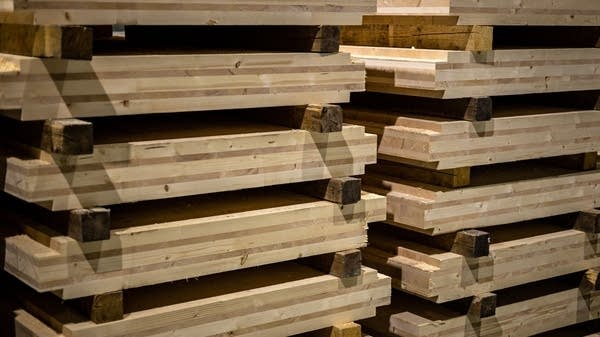Fire Resistant Construction Materials are essential for safeguarding your home or building against the unexpected threat of fire. Imagine feeling secure knowing that your property and loved ones are protected.
As you continue reading, you’ll uncover the secrets behind these innovative materials, which enhance safety and add value to your investment. You’ll learn how the right choices can make a difference in protecting your space.
Ready to discover how you can build a safer, more resilient environment? Keep reading to find out more.

Credit: www.ngctestingservices.com
Types Of Fire-Resistant Materials
Choosing the right fire-resistant materials can make a huge difference in protecting your property and loved ones. These materials come in different forms, each designed to slow down or stop the spread of fire. Understanding the types available helps you make smarter decisions for your construction or renovation projects.
Non-combustible Materials
Non-combustible materials don’t catch fire easily. They include concrete, steel, and bricks, which can withstand high temperatures without burning. Using these materials in your building’s structure can significantly reduce fire risks.
For example, steel beams don’t ignite, but they can weaken under extreme heat, so it’s smart to combine them with other fire-resistant elements. Have you ever considered how much safer a concrete wall feels compared to wood during a fire?
Fire-resistant Treated Wood
Wood is common in construction but can be vulnerable to fire. Fire-resistant treated timber is chemically treated to resist ignition and slow burning. This option lets you keep the natural look of wood while improving safety.
Think about using treated wood for your home’s interior beams or flooring—it adds warmth and strength without sacrificing fire resistance. Have you checked if your wood is treated when planning your next project?
Fire-retardant Coatings
Fire-retardant coatings are special paints or sprays applied to materials to increase fire resistance. They can be used on wood, metal, or fabric and create a barrier against flames.
Applying these coatings to exposed surfaces can buy crucial extra minutes during a fire. Could a simple coat of fire-retardant paint be the difference between damage and disaster in your space?
Intumescent Paints
Intumescent paints expand when exposed to heat, forming a thick, insulating layer that protects the underlying material. This reaction helps keep steel and wood from reaching dangerous temperatures too quickly.
It’s like giving your walls a built-in fire shield that activates only when needed. Have you explored intumescent paints for areas where fire protection is critical but aesthetics matter just as much?

Credit: benitolink.com
Key Properties Of Fire-Resistant Materials
Fire-resistant construction materials protect buildings and save lives. Their effectiveness depends on certain key properties. These properties help materials withstand fire and reduce damage.
Understanding these key properties helps choose the right materials for safety and durability. Each property plays a vital role in fire resistance.
Thermal Stability
Thermal stability means a material can keep its shape and strength under high heat. It does not melt, warp, or break easily when exposed to fire. Materials with good thermal stability slow down fire spread and maintain structural integrity.
Fire Resistance Ratings
Fire resistance ratings show how long a material can withstand fire. These ratings come from standardized tests. They measure the time a material prevents fire from passing through. Higher ratings mean better protection and longer fire resistance.
Smoke And Toxicity Levels
Low smoke and toxicity are crucial for safety during fires. Some materials release harmful gases when burned. Fire-resistant materials produce less smoke and fewer toxic fumes, which helps people breathe easier and escape safely.
Durability Under Heat
Durability under heat means a material stays strong during long fire exposure. It resists cracking, crumbling, or breaking apart. Durable materials maintain their fire protection role throughout the event, ensuring lasting safety for buildings and occupants.
Common Fire-Resistant Building Components
Fire-resistant construction materials play a crucial role in protecting buildings and lives. Knowing which components commonly feature these materials helps you make safer choices. Let’s look at key building parts often using fire-resistant materials to boost safety.
Walls And Partitions
Walls and partitions are your first line of defense against fire spread. Materials like gypsum boards, concrete blocks, and fire-rated drywall can withstand high temperatures for extended periods.
Installing these materials in interior and exterior walls slows down fire, giving you more time to evacuate. Have you checked if your walls have fire-resistant ratings? It’s a simple step that can make a big difference.
Floors And Ceilings
Floors and ceilings also need protection, as fire can travel vertically and horizontally. Concrete slabs, fireproof insulation, and fire-rated ceiling tiles help contain flames and smoke.
Using these materials prevents fire from moving quickly between floors. Consider your building’s layout—are the floors and ceilings designed to block fire or just support weight?
Doors And Windows
Doors and windows are vulnerable spots in any fire-resistant design. Fire-rated doors, often made from steel or special wood composites, can resist heat and block smoke.
Tempered or laminated glass windows reduce the chance of breaking early in a fire. Consider upgrading these components to improve your building’s overall fire resistance.
Structural Supports
Structural supports hold up your building, so their fire resistance is critical. Steel beams coated with fireproofing materials or concrete columns offer strength and protection.
Without fire-resistant supports, a building’s stability can fail quickly during a fire. Have you considered the materials supporting your structure and how they react to intense heat?
Advantages Of Fire-Resistant Construction
Choosing fire-resistant construction materials offers clear advantages beyond just preventing fires. These materials help protect lives, limit damage, and save money. Understanding these benefits can help you make smarter decisions for your building projects.
Enhanced Safety
Fire-resistant materials slow the spread of flames, giving you and others more time to evacuate safely. This delay can be crucial in avoiding injuries or worse. Have you ever wondered how a small change in materials could save lives during an emergency?
Reduced Property Damage
Using fire-resistant materials reduces the intensity and speed of fire damage. This means your property and belongings have a better chance of surviving a fire incident. Imagine how much easier recovery would be with less damage to repair.
Compliance With Building Codes
Many building regulations require fire-resistant materials to ensure safety standards are met. Staying compliant helps you avoid legal issues and costly fines. Are you confident your construction choices meet the latest codes?
Lower Insurance Costs
Insurance companies often offer reduced premiums for buildings made with fire-resistant materials. This saves you money every year while keeping your property better protected. Wouldn’t you want to pay less for insurance while improving safety?
Choosing The Right Fire-Resistant Materials
Choosing the right fire-resistant materials ensures safety and durability in any building project. These materials protect structures from fire damage and help save lives. Selecting the best option depends on several key factors. Understanding these factors helps make smarter choices for construction needs.
Assessing Building Requirements
Start by identifying the building’s purpose and fire risk level. Residential, commercial, and industrial buildings have different needs. Consider local fire codes and regulations. Think about the building’s size and layout. Areas with high fire exposure need stronger protection. This step guides the selection of suitable materials.
Evaluating Material Performance
Check each material’s fire resistance rating. Look for how long it can withstand heat and flames. Consider smoke production and toxic gas release. Materials like concrete, gypsum, and fire-retardant-treated wood offer various benefits. Testing reports and certifications provide reliable data. Choose materials that meet safety standards.
Cost Vs. Benefit Analysis
Balance upfront costs with long-term savings and safety. Fire-resistant materials may cost more initially, but they reduce repair expenses and insurance premiums later. Avoid sacrificing quality for a lower price. Investing in better materials improves building resilience. Calculate potential risks and savings to make informed choices.
Environmental Considerations
Pick materials with low environmental impact. Some fire-resistant products use sustainable or recycled content. Avoid materials that release harmful chemicals when burned. Check for certifications like GREENGUARD or Cradle to Cradle. Eco-friendly options support healthier living spaces and the planet. Align choices with green building goals.
Credit: aaronjwriter.medium.com
Installation Best Practices
Installing fire-resistant construction materials correctly is crucial to maximizing their effectiveness and protecting your building from potential fire hazards. Poor installation can compromise the material’s fire resistance, rendering it less effective or useless. Paying close attention to best practices during installation ensures safety, compliance, and durability.
Proper Handling And Storage
Fire-resistant materials often come with specific handling instructions to maintain their integrity. To prevent deterioration, store them in a dry, cool place away from direct sunlight.
Handling these materials carefully avoids damage, such as dents or cracks, that can reduce fire resistance. Have you checked if your supplier provides detailed storage guidelines? Following these can save you from costly mistakes later.
Integration With Other Systems
Fire-resistant materials don’t work in isolation; they must integrate seamlessly with electrical, plumbing, and HVAC systems. Poor integration can create gaps or weak points where fire could spread.
Coordinate with all trades to ensure materials align perfectly with other building components. Use fire-rated sealants and connectors to maintain a continuous fire barrier. Are you coordinating early enough with your team to avoid costly rework?
Quality Control Measures
Regular inspections during installation help catch errors before they become permanent. Verify material certifications and check for visible defects on arrival.
Use checklists to track compliance with fire resistance standards at every stage. Testing samples on-site or in labs ensures the installation meets required performance levels.
Maintenance Tips
Fire-resistant materials require ongoing maintenance to retain their protective qualities. Schedule regular inspections to identify wear, cracks, or damage that could compromise fire resistance.
Clean surfaces according to manufacturer instructions and replace any damaged components immediately. How often do you review your building’s fire protection systems to keep them in peak condition?
Innovations In Fire-Resistant Technology
Fire-resistant technology has evolved rapidly in recent years. New materials now offer better protection and durability, helping to save lives and reduce property damage. Advances focus on smarter, greener, and more effective solutions. This section explores key developments shaping fire-resistant construction materials today.
Nanotechnology Applications
Nanotechnology improves fire resistance at a microscopic level. Tiny particles enhance material strength and heat resistance, creating barriers that slow down fire spread. Nanocoatings can protect wood, fabrics, and metals. These coatings resist high temperatures and reduce smoke. Nanomaterials also maintain structural integrity during fires. This technology makes fireproofing more efficient and long-lasting.
Smart Fire-resistant Materials
Smart materials adapt to heat and fire conditions automatically. They can change their properties when exposed to flames. Some expand to form protective layers that block heat, while others release fire-retardant chemicals to slow burning. These materials improve safety by reacting faster than traditional ones. They also reduce damage and give more time to evacuate. Smart fire-resistant solutions are becoming common in modern buildings.
Sustainable Fireproof Solutions
Sustainability is a growing focus in fireproof material design. Eco-friendly materials use fewer toxic chemicals and are often made from natural or recycled resources. These options reduce environmental impact without losing effectiveness. Examples include fire-resistant clay, treated wood, and bio-based foams. Sustainable fireproofing supports green building standards and promotes healthier indoor air quality for occupants.
Future Trends
Future fire-resistant materials will blend technology and eco-friendliness. Research targets lighter, stronger, and cheaper options. Integration with sensors and smart systems will improve fire detection. Self-healing materials may repair damage caused by heat. Nanotechnology and biotechnology will play key roles. These trends aim to create safer, smarter, and greener buildings.
Case Studies And Real-world Applications
Understanding how fire-resistant construction materials perform can change how you approach building safety. Case studies and real-world examples show you what works, what doesn’t, and how these materials protect lives and property. Let’s look at how different sectors use these materials effectively.
Residential Buildings
Fire-resistant materials can be lifesavers in homes. A suburban neighborhood in California used fire-resistant siding and roofing after wildfires threatened the area. Homeowners reported fewer damages than in previous fires, showing how choosing the right materials can reduce risk.
Have you ever considered how your home’s materials affect your family’s safety during a fire? Fire-resistant drywall and tempered glass windows are practical choices that can slow down flames and give you more time to escape.
Commercial Structures
Office buildings and shopping centers face strict fire codes. A high-rise in Chicago installed fire-resistant concrete and intumescent coatings on steel beams. This helped the building withstand a fire outbreak without collapsing, protecting employees and visitors.
Think about your workplace—does it have materials that can withstand fire? Using non-combustible cladding and fire-rated doors can keep a commercial space safer and reduce insurance costs.
Industrial Facilities
Factories and warehouses often store flammable materials, making fire resistance crucial. A chemical plant in Texas reinforced its walls with fire-resistant panels and installed fireproof insulation around critical machinery. This setup minimized damage during a recent fire and allowed quick resumption of operations.
Could your facility benefit from fire-resistant barriers that protect key equipment? Investing in these materials can save time and money by avoiding long shutdowns.
Public Infrastructure
Schools, hospitals, and transportation hubs use fire-resistant materials to protect many people. A hospital in New York upgraded to fire-resistant ceiling tiles and fire-retardant paints after a small fire incident. This upgrade improved safety and peace of mind for patients and staff.
Have you noticed the building materials around you when you visit a public place? Fire-resistant concrete and gypsum boards are common in such settings because they help prevent fire from spreading in crowded areas.
Frequently Asked Questions
What Are Fire-Resistant Construction Materials?
Fire-resistant construction materials can withstand high temperatures without igniting. They slow fire spread, protect structures, and increase safety. Common types include concrete, brick, gypsum, and fire-rated glass. These materials help meet building codes and reduce fire damage risks.
How Do Fire-Resistant Materials Improve Building Safety?
Fire-resistant materials limit fire growth and smoke development. They provide extra time for evacuation and firefighting. Their use reduces structural collapse risks and property loss. Fire-resistant materials enhance occupant protection and overall building resilience during fires.
Which Materials Are Best For Fireproof Walls?
Concrete blocks, bricks, and gypsum boards are ideal for fireproof walls. These materials effectively resist heat and flames. They prevent fire penetration and maintain structural integrity. Fireproof walls help contain fires and protect adjacent areas.
Can Fire-Resistant Materials Reduce Insurance Costs?
Yes, using fire-resistant materials can lower insurance premiums. Insurers view fire-resistant buildings as lower risk. This reduces potential claims and losses. Incorporating these materials can lead to significant cost savings over time.
Conclusion
Choosing fire-resistant construction materials helps protect buildings and lives. These materials slow down fire spread and reduce damage. They also provide extra time for people to escape safely. Using them also lowers repair costs after a fire. Builders and homeowners benefit from strong, safe structures.
Fire safety should always be a top priority. Investing in the right materials makes a big difference. It keeps communities safer and buildings standing longer. Safety starts with the right choices in construction.








